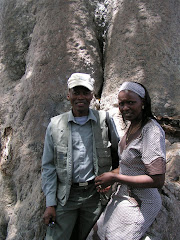Institutional care while not the best option is sometimes unavoidable. Apparently, support should be given to centres that are suitable for children with special needs, but placement should not be considered permanent.
The increase in the number of children living out of family care is a growing concern especially in developing countries and this can be attributed to several problems. Out of the estimated 14.5 million orphans in the world, 12 million are in Sub- Saharan African (UNAIDS 2002). This has accelerated the use of residential care as more and more parents succumb to the HIV/AIDS pandemic in sub-Saharan Africa. Other contributing factors include armed conflict and genocide in many African countries such as Rwanda, Liberia and Sierra-Leone, which have resulted in the killing of parents, displacement of children from their families and necessitated urgent solutions to childcare problems (Tolfree, 2003).
There are some existing tensions and dilemmas found in residential care and placement of children. There is serious concern in respect of the growing use of residential care especially in developing countries. As such, children’s rights are violated in residential care centres. There is need to put child protection plans and strategies in place to address children’s problems through the use of other alternative methods of care and protection of children.
The reasons for so many children – over 8 million world-wide, living in residential care are diverse and complex. The socio-economic problems, globalisation, poverty, migration, HIV/AIDS pandemic, armed conflict and various forms of exploitation and abuse have affected the ability of families to raise their own children (Tolfree, 1995).
In many developing countries, residential care is the main strategy for helping children in need of care and protection. Save the Children argues that many features of residential care are an abuse of children’s rights and is concerned that the issue of children living in institutional care is escaping international attention and needs placing on the international agenda. Another concern is that the search for good community-based childcare alternatives is not being given enough attention by governments and donors. Through working with children, there is need to find better solutions for helping children affected by poverty, armed conflict and HIV/AIDS.
References
Save the Children Fund, UK, 1991.Sellick, C., (1998, p.303). The Use of Institutional Care for Children across Europe. European Journal of Social Work vol. 1, No. 3, pp. 301-310, 1998.
Short Term Plan of Action (STPA) on the Care of Orphans in Botswana. Ministry of Local Government, Lands and Housing. 1999. Gaborone. Botswan
Tolfree, D. K. (1995) Roofs and Roots: The Care of Separated Children in the Developing World. Aldershot. Arena.Tolfree, D.K. (2003). Save the Children Sweden. Stockholm. Sweden.
Subscribe to:
Post Comments (Atom)











No comments:
Post a Comment